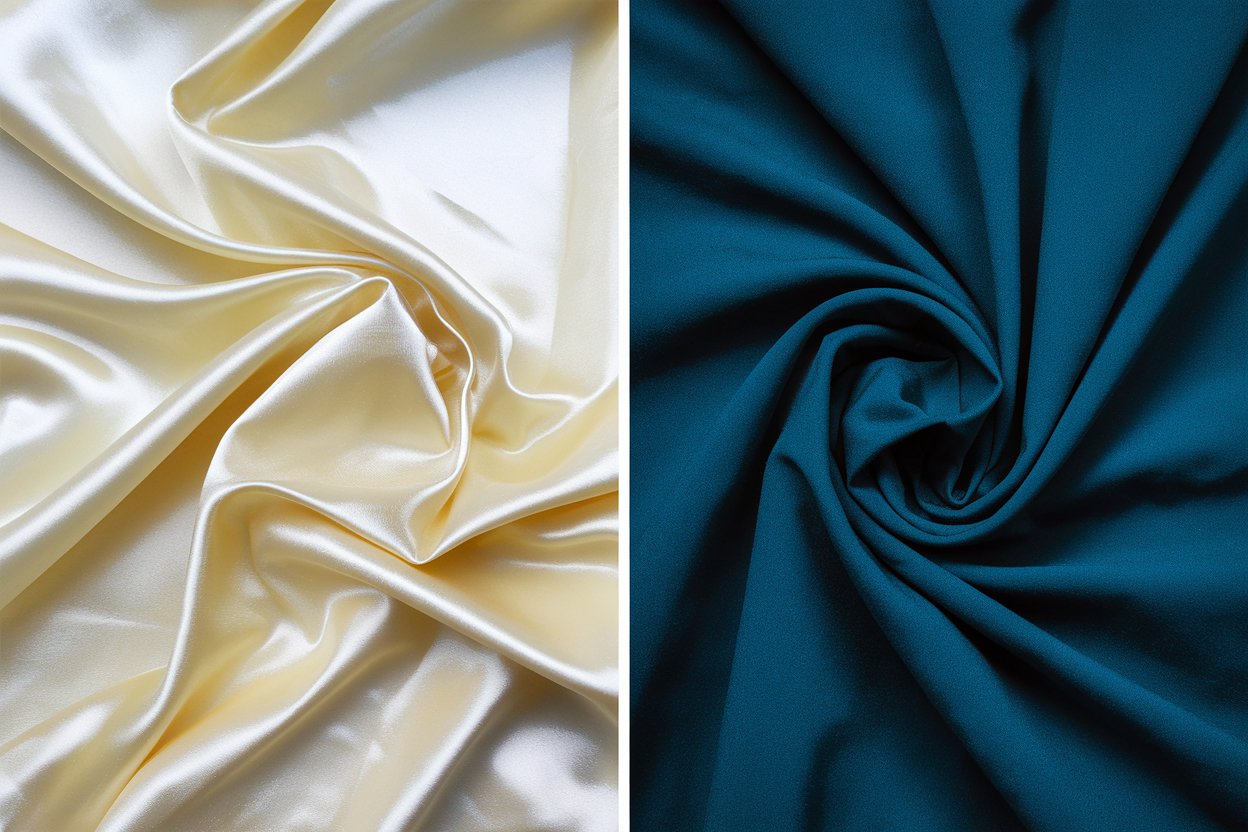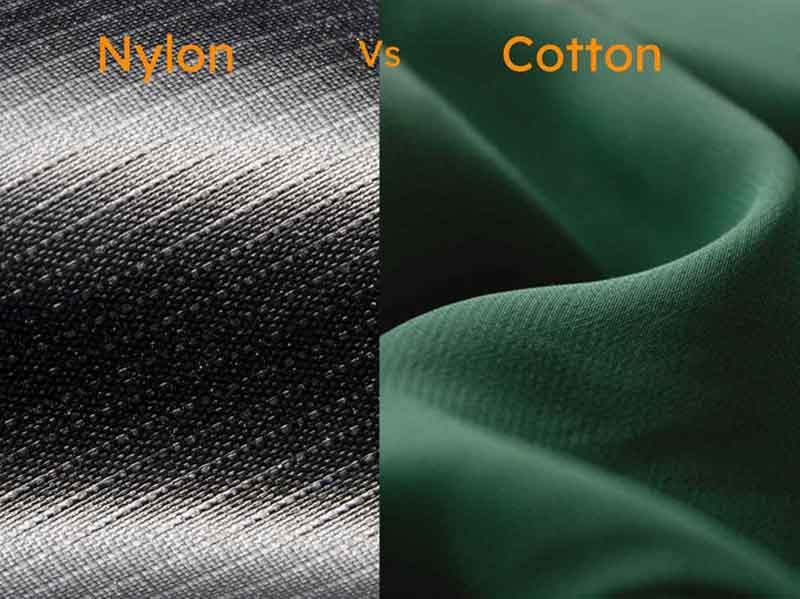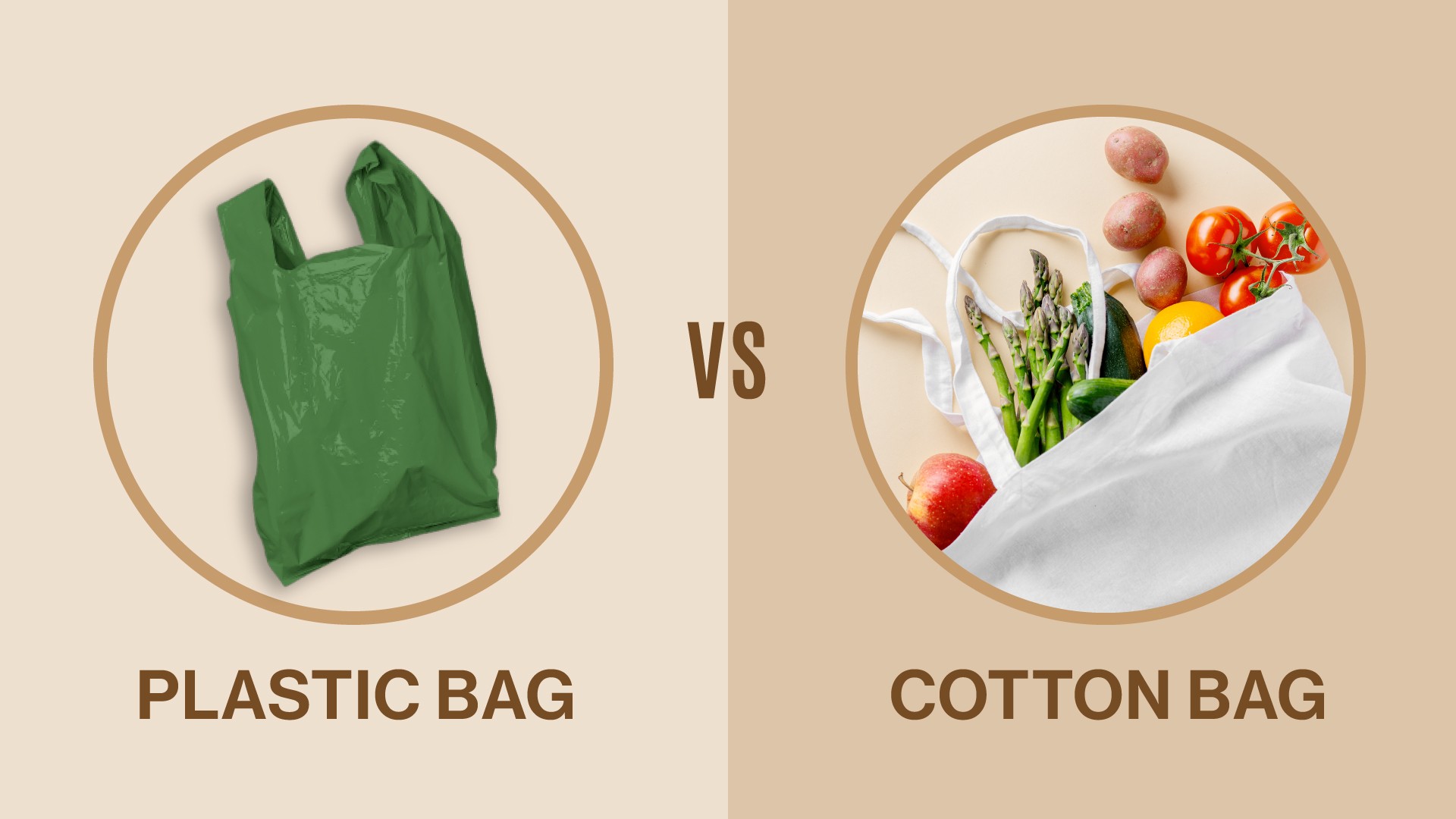Cotton garment bags are best for long-term storage due to their breathability, while synthetics offer superior water resistance ideal for travel.

Table of Contents
- Why Does the Right Garment Bag Material Matter?
- A Deep Dive into Cotton Garment Bags
- Understanding Synthetic Garment Bags
- Cotton vs. Synthetic: A Side-by-Side Comparison
- Which Bag Should You Choose for Your Needs?
- What to Avoid When Selecting a Garment Bag
- Protecting Your Investment: More Than Just a Bag

Why Does the Right Garment Bag Material Matter?
Choosing a garment bag seems simple, but the material you select is the single most important factor in preserving your clothing. The right fabric acts as a guardian for your finest pieces, while the wrong one can cause irreversible damage. A bag’s primary purpose is to shield garments from dust, light, and pests. However, its material dictates how it interacts with the environment and the fabric it protects.

The core difference lies in breathability. Natural fibers allow air to circulate, preventing moisture buildup that can lead to mildew, mold, and fabric yellowing over time. Synthetic materials, on the other hand, often create a sealed environment. While this offers excellent protection from external elements like rain, it can trap humidity, which is detrimental for long-term storage. Understanding this fundamental distinction is key to safeguarding your suits, dresses, and heirloom pieces effectively.
A Deep Dive into Cotton Garment Bags
Cotton, particularly in a sturdy canvas weave, is widely regarded as the premium choice for clothing preservation. As a natural fiber, its properties are uniquely suited for protecting delicate and valuable textiles like wool, silk, and cashmere. It creates a micro-environment that allows the fabric within to breathe, releasing moisture and preventing the stale odors that can develop in sealed plastic bags.
The Advantages of Cotton
The primary benefit of a cotton garment bag is its exceptional breathability. This airflow is crucial for preventing mold and mildew, especially in fluctuating temperatures or humid climates. Natural fibers do not emit chemicals that can cause discoloration or weaken fabric over time, making cotton an archivally safe option for your most cherished items.
Furthermore, cotton is naturally acid-free and provides a soft, non-abrasive surface that won’t snag delicate fabrics or embellishments. It offers robust protection from dust and light, which can cause fading. Cotton is also a strong deterrent against pests like moths, as they cannot easily eat through the dense weave, especially when the bag is fully zippered.
The Drawbacks of Cotton
Despite its superior protective qualities for storage, cotton is not without its weaknesses. The material is highly absorbent, meaning it offers virtually no protection against rain or spills. If a cotton garment bag gets wet, the moisture can seep through directly to your clothing. They are also bulkier and heavier than their synthetic counterparts, which can be a consideration for air travel with strict weight limits.
Cost is another factor; high-quality, heavy-duty cotton or canvas garment bags are typically more expensive than mass-produced synthetic options. They also require cleaning and can wrinkle, demanding a bit more maintenance to keep them in pristine condition.
Understanding Synthetic Garment Bags
Synthetic garment bags are typically made from materials like non-woven polypropylene, polyester, nylon, vinyl, or PEVA (polyethylene vinyl acetate). These materials are valued for their durability, light weight, and resistance to external elements, making them a common sight at dry cleaners and a popular choice for travelers.
The Strengths of Synthetics (Polyester, PEVA, Nylon)
The standout feature of synthetic garment bags is their resistance to water. A polyester or nylon bag will effectively shield a suit from a sudden downpour, a quality that cotton simply cannot match. This makes them an excellent choice for commuting or travel, where exposure to the elements is a real possibility.
Synthetics are also very lightweight, easy to fold or pack, and generally much more affordable. They are resistant to stretching and shrinking and can be easily wiped clean. The slick surface also helps prevent wrinkles, as clothes can slide easily inside without catching.
The Weaknesses of Synthetics
The biggest drawback is a lack of breathability. Plastic-based bags trap moisture. If you place a garment inside that is even slightly damp, or store it in a humid environment, you create the perfect breeding ground for mold and mildew. Over the long term, chemicals within some plastics (especially vinyl/PVC) can off-gas, leading to fabric yellowing and degradation. This makes them entirely unsuitable for archival or long-term storage of valuable clothing.
Cotton vs. Synthetic: A Side-by-Side Comparison
To make the decision clearer, here is a direct comparison of the key attributes for each material type.
| Feature | Cotton / Canvas Garment Bag | Synthetic Garment Bag (Polyester, PEVA) |
|---|---|---|
| Breathability | Excellent; allows air to circulate, preventing mold and mildew. | Poor; traps moisture, which can damage fabric over time. |
| Long-Term Storage | Highly Recommended. Protects from dust and pests while letting fabric breathe. | Not Recommended. Can cause yellowing and mildew. |
| Water Resistance | Poor; absorbs moisture and offers no protection from rain. | Excellent; repels water, ideal for travel and commuting. |
| Durability | Very durable and tear-resistant, especially heavy canvas. | Varies; Nylon and Polyester are strong, but non-woven polypropylene can tear easily. |
| Cost | Higher initial investment. | Generally more affordable. |
| Best For | Storing wool suits, silk dresses, leather jackets, and heirloom garments. | Protecting clothing during travel, commuting, or for a few days before an event. |
Which Bag Should You Choose for Your Needs?
The “best” material is not a one-size-fits-all answer. It entirely depends on your intended use. The ideal solution is often to have both types available: one for protecting clothes at home and another for when you are on the move.
For Long-Term Storage of Fine Garments
For storing clothing for a season or longer, cotton is the undisputed winner. When you put away your winter wool coats, cashmere sweaters, or a special occasion gown, a breathable cotton bag is essential. It will protect the garment from dust while allowing any residual moisture to escape, preserving the integrity and color of the fabric for years to come.
For Short-Term Travel and Commuting
When you are traveling, a synthetic bag offers superior practical benefits. Its lightweight nature and water resistance provide peace of mind. Whether you are caught in the rain running to a meeting or worried about a spill in your luggage, a polyester or nylon bag provides a necessary barrier that cotton cannot. Just be sure to unpack your garments and let them air out as soon as you reach your destination.
What to Avoid When Selecting a Garment Bag
Regardless of material, there are a few red flags to watch for. Avoid any bag made from PVC (polyvinyl chloride), as it is the worst offender for off-gassing chemicals that can ruin fabric. Steer clear of the flimsy, thin plastic bags provided by many dry cleaners; they are intended for temporary protection only and can trap cleaning chemicals against your clothes, causing damage.
Finally, ensure any bag you choose is large enough. A garment crammed into a bag that is too small will inevitably become wrinkled and stressed at the seams. Look for a full-length, quality zipper that won’t snag or break, as a secure closure is critical for keeping out dust and pests.
Protecting Your Investment: More Than Just a Bag
Your wardrobe contains more than just clothes; it contains investments. A beautifully crafted full-grain leather jacket from Beldurtaleather.com, a tailored wool suit, or a silk dress represents a commitment to quality and style. Protecting these pieces is paramount to ensuring their longevity. A high-quality garment bag is not an accessory; it is an essential tool for stewardship.
When storing a leather jacket, for instance, breathability is non-negotiable. Sealing it in plastic would be a critical mistake, as the trapped moisture could damage the hide. A sturdy cotton canvas bag, however, protects the leather from dust and scratches while allowing it to breathe naturally. By pairing your fine garments with the appropriate storage, you honor the craftsmanship behind them and ensure they remain in impeccable condition for every journey and occasion.



